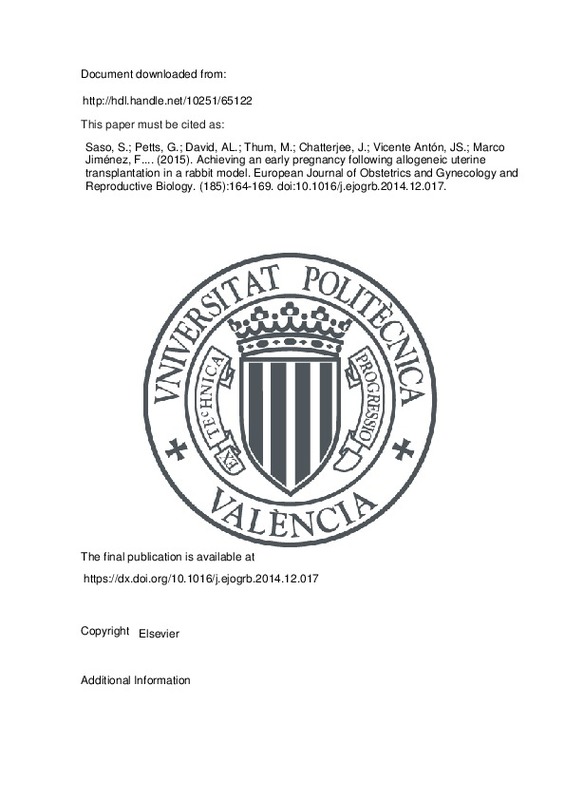JavaScript is disabled for your browser. Some features of this site may not work without it.
Buscar en RiuNet
Listar
Mi cuenta
Estadísticas
Ayuda RiuNet
Admin. UPV
Achieving an early pregnancy following allogeneic uterine transplantation in a rabbit model
Mostrar el registro completo del ítem
Saso, S.; Petts, G.; David, AL.; Thum, M.; Chatterjee, J.; Vicente Antón, JS.; Marco Jiménez, F.... (2015). Achieving an early pregnancy following allogeneic uterine transplantation in a rabbit model. European Journal of Obstetrics and Gynecology and Reproductive Biology. (185):164-169. doi:10.1016/j.ejogrb.2014.12.017
Por favor, use este identificador para citar o enlazar este ítem: http://hdl.handle.net/10251/65122
Ficheros en el ítem
Metadatos del ítem
| Título: | Achieving an early pregnancy following allogeneic uterine transplantation in a rabbit model | |
| Autor: | Saso, Srdjan Petts, Gemma David, Anna L. Thum, Meen-Yau Chatterjee, Jayanta Corless, David Boyd, Michael Noakes, David Lindsay, Iain Del Priorei, Giuseppe Ghaem-Maghami, Sadaf Smith, J. Richard | |
| Entidad UPV: |
|
|
| Fecha difusión: |
|
|
| Resumen: |
[EN] Objective: Uterine transplantation (UTx) has been proposed as a treatment option for women diagnosed
with absolute uterine factor infertility (AUFI). The goal of UTx remains achieving pregnancy and live
birth of ...[+]
|
|
| Palabras clave: |
|
|
| Derechos de uso: | Reserva de todos los derechos | |
| Fuente: |
|
|
| DOI: |
|
|
| Editorial: |
|
|
| Versión del editor: | https://dx.doi.org/10.1016/j.ejogrb.2014.12.017 | |
| Código del Proyecto: |
|
|
| Agradecimientos: |
The authors would like to thank all the staff and veterinarians at the Royal Veterinary College (London, UK) who have been with us from the beginning and have worked tirelessly at ensuring we had the best possible conditions ...[+]
|
|
| Tipo: |
|







![[Cerrado]](/themes/UPV/images/candado.png)


